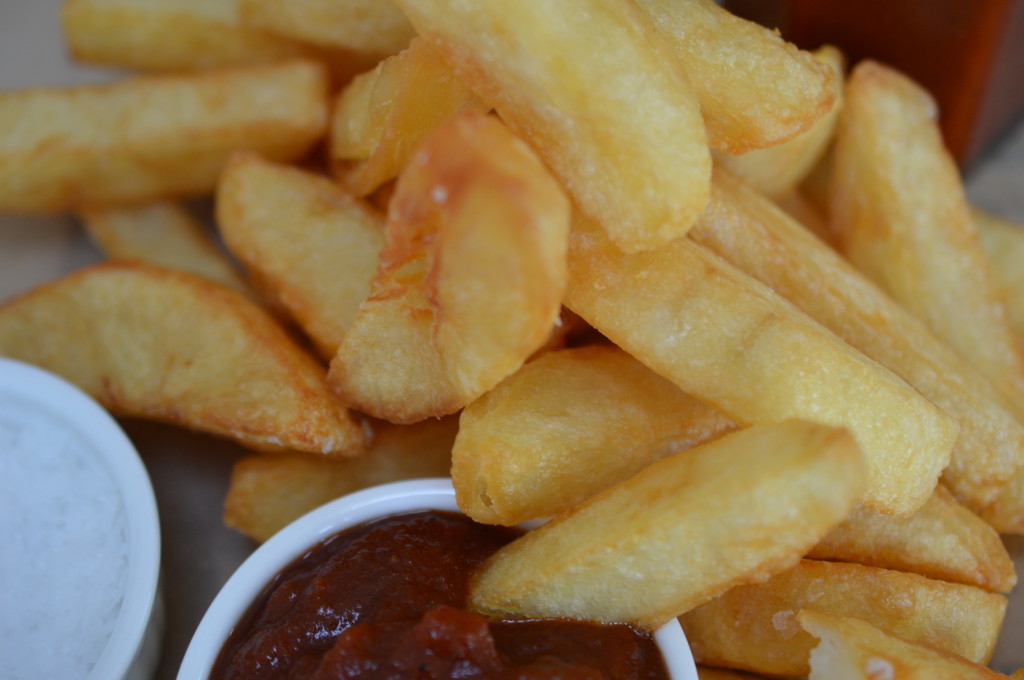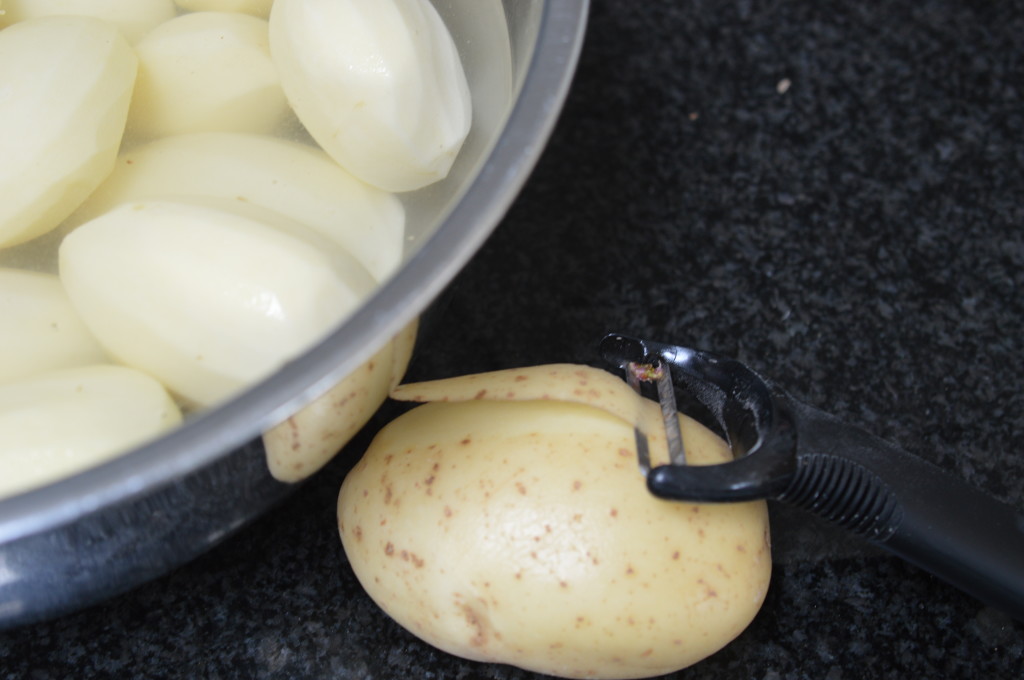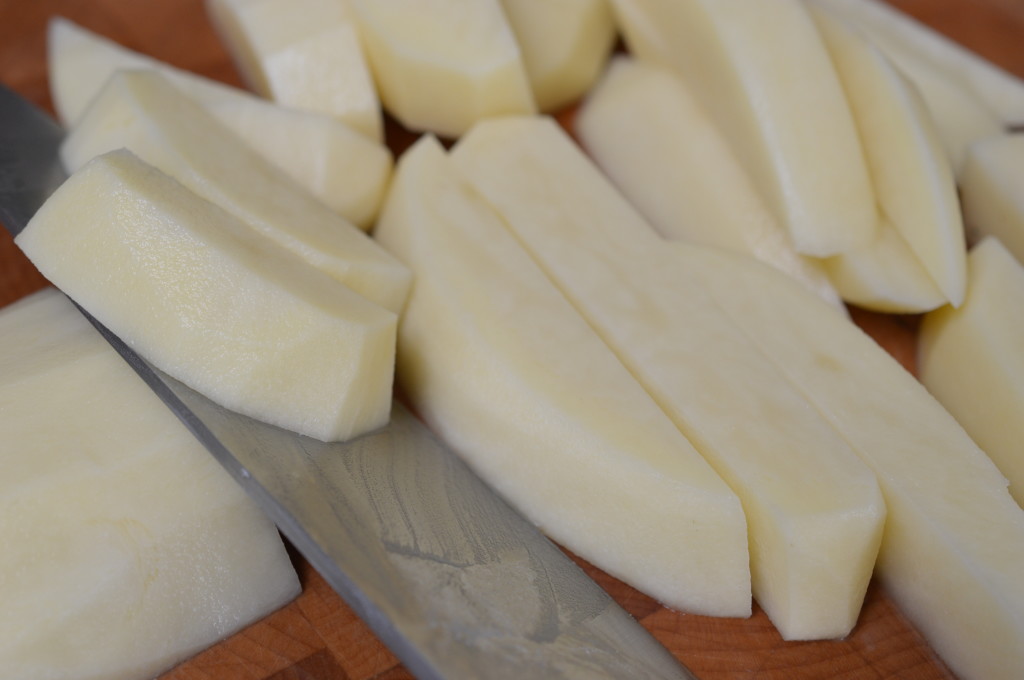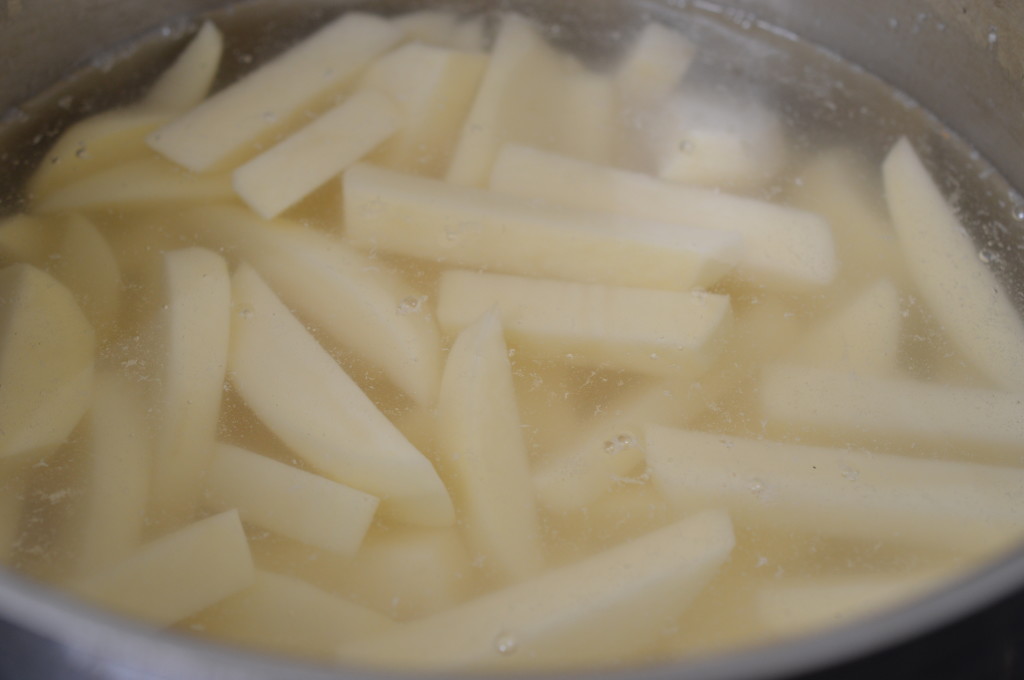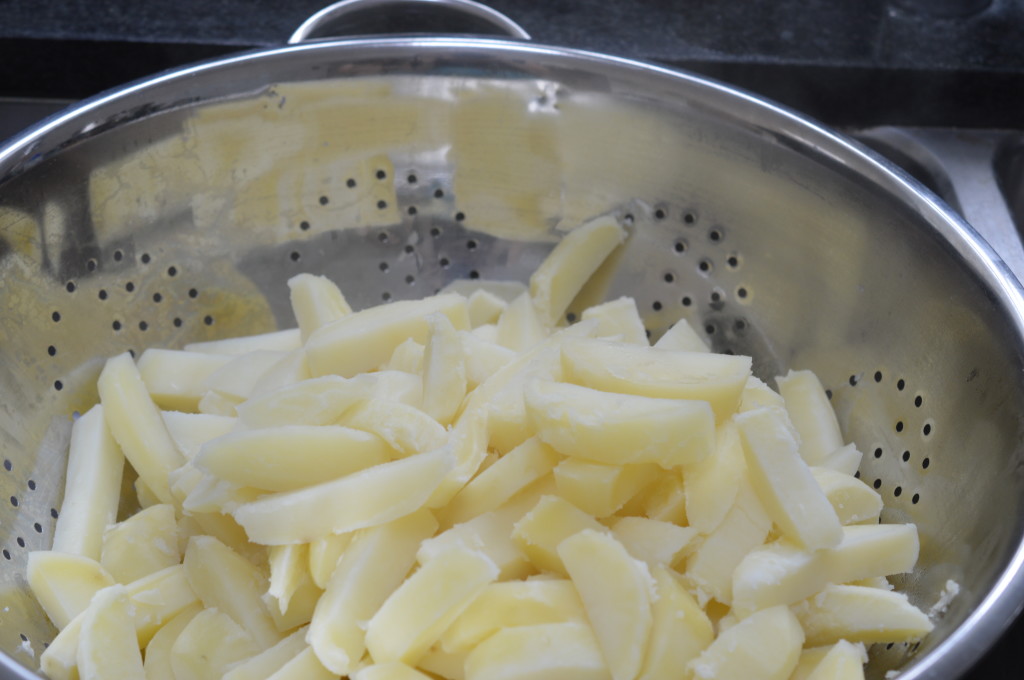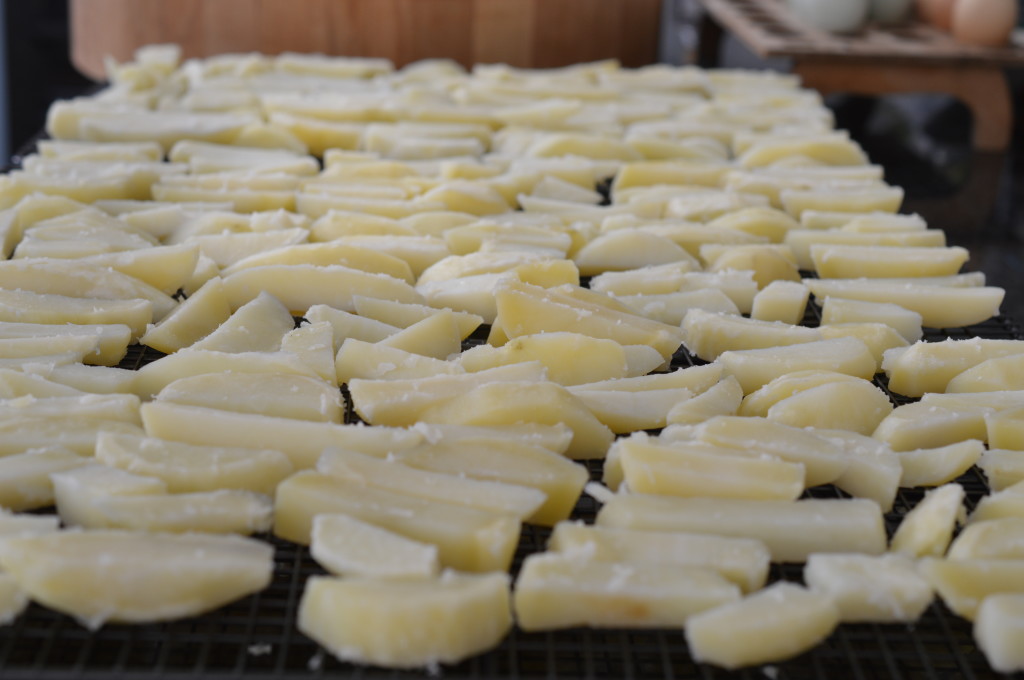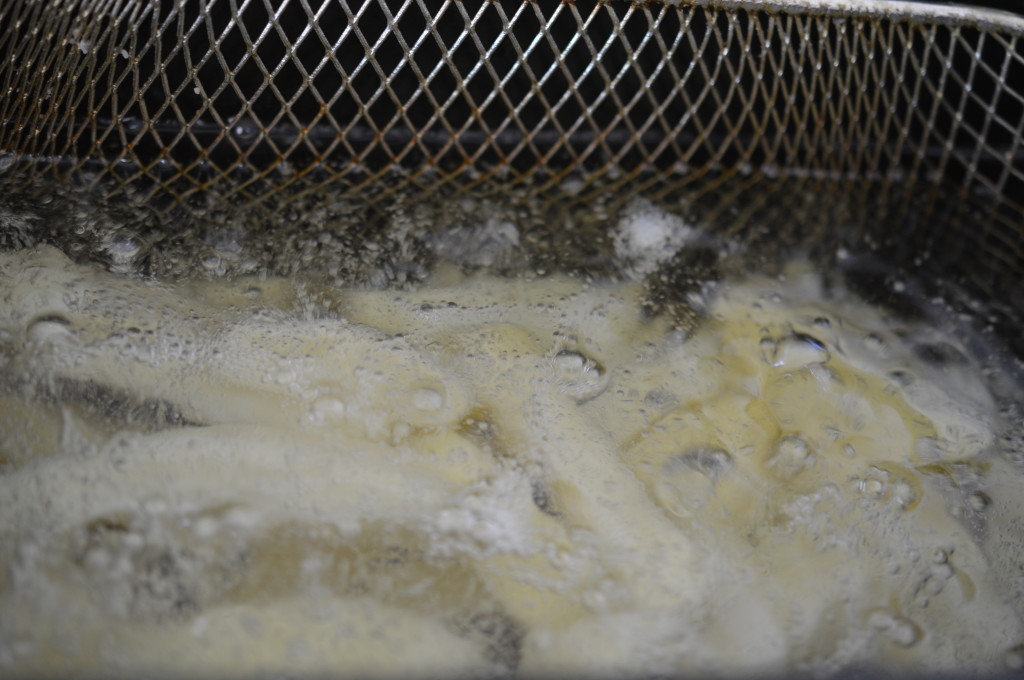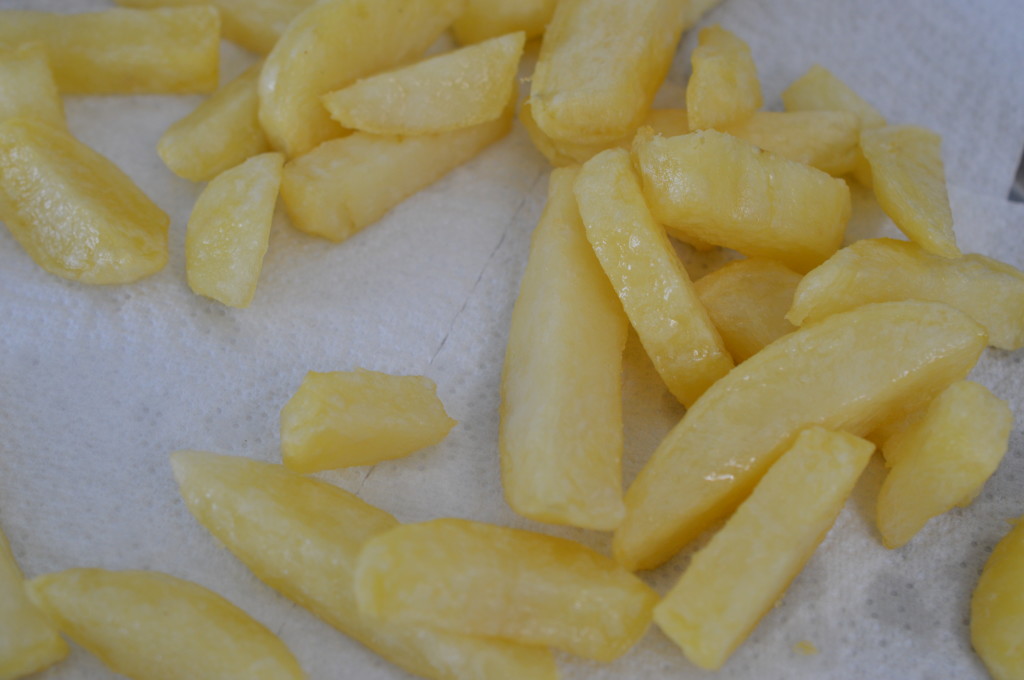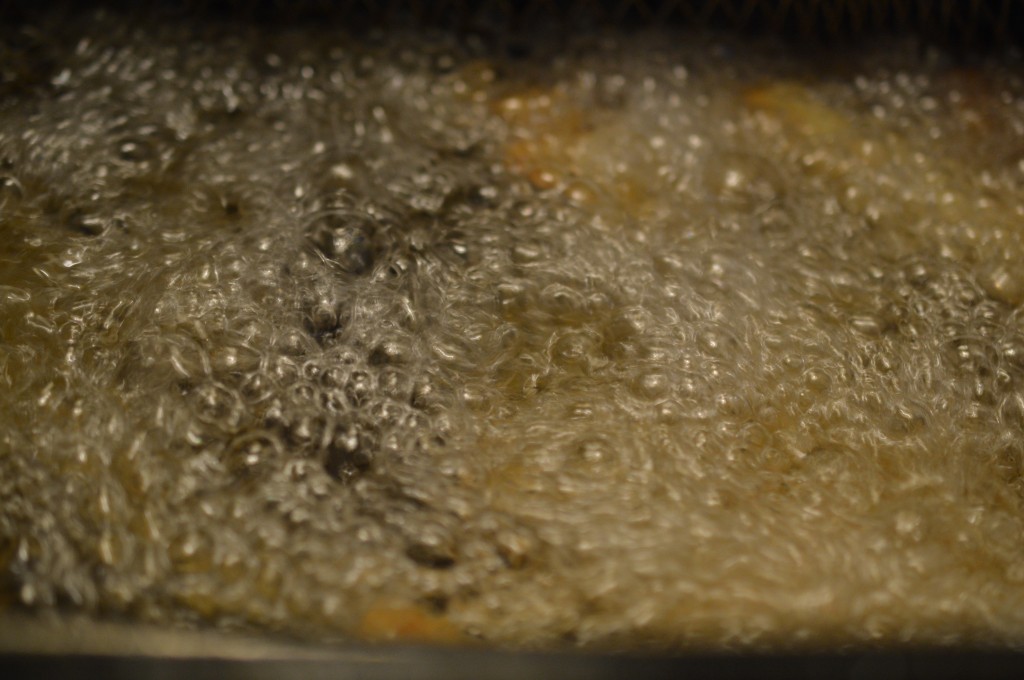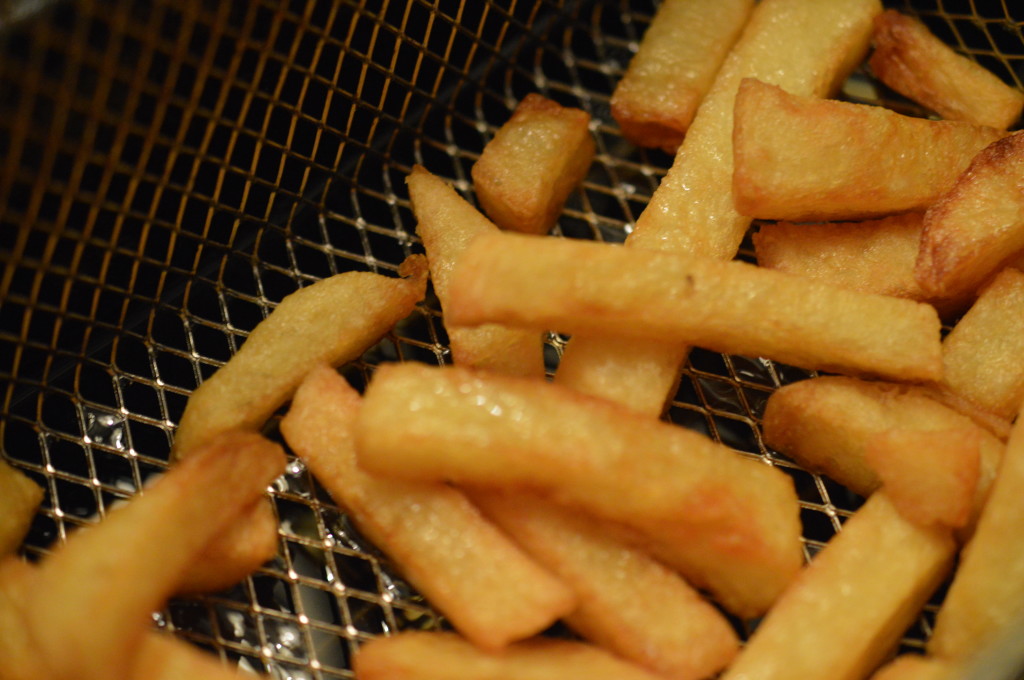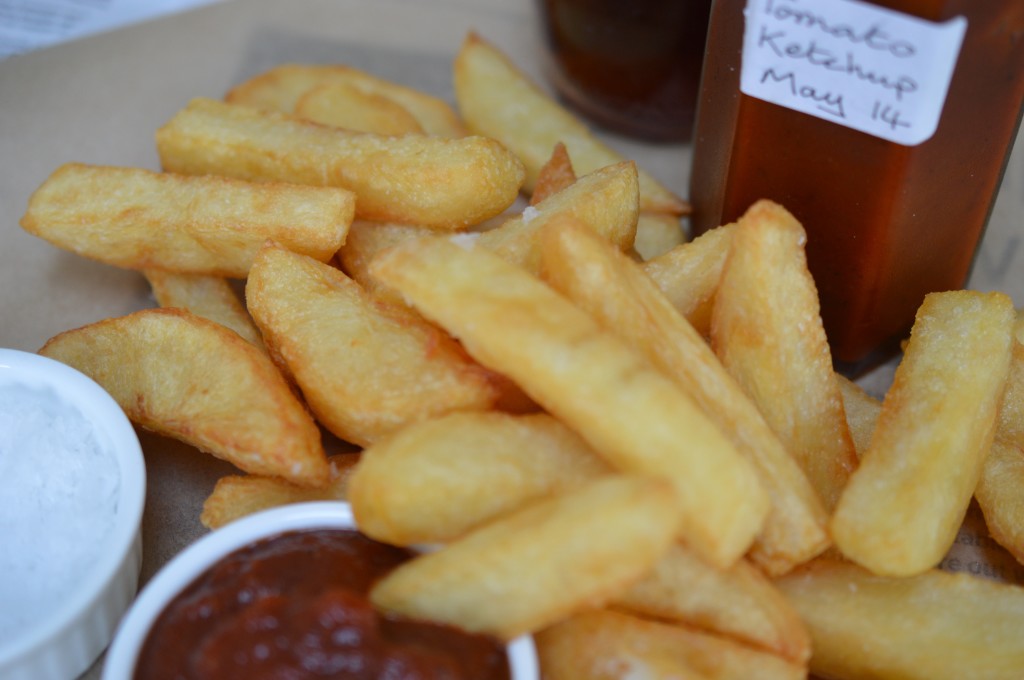Chunky Chips
Chunky chips, exactly as God intended – par-boiled and twice fried. These are a world away from limp, greasy chips that sometimes appear under the same name.
These aren’t skinny French fries, known as ‘frites’ in my house. (Does it help that the fat chip is a healthier choice than a thin one?) Nor, are they ‘potato chips’, which I would call ‘crisps’.) Or even potato wedges. They are chips ‘proper’ and the traditional accompaniment to the British institution that is ‘fish and chips’ from a time when cod was not endangered and oysters were a cheap pie filler. For all they are a part of my culinary heritage, chips apparently originate in either Belgium or France (and I’m not joining that debate) in the seventeenth century as a substitute for fish. Fried fish arrived in London about the same time, brought by Jewish refugees, but that’s a post for a different day. It’s enough that I’m truly grateful!
Making them begins with the potato. Non-negotiable, in my opinion, is that it’s a ‘fluffy’ one. From choice I like my potatoes covered in dirt – which naturally protects them from sunlight which is what turns them green – but these are a sanitised supermarket ‘Maris Piper’ buy. There’s a school of thought which suggests you need to soak them to rid them of starch, but I consciously don’t do that. Potatoes absorb water and I don’t like a soggy tasting chip. When I’m actually peeling I place the potatoes I’ve done in a bowl of water, but that’s it. Just while I’m working. You’re still left with some pretty murky water.
And then it’s on to the cutting. Hand-cut isn’t just a gastro-pub gimmick. The slightly mis-shapen end bits are deliciously crunchy and an absolute positive. My mum cut hers crinkly. I cut mine straight. Either way, you are looking for something about a finger-width.
Now put the cut chips into a saucepan of fresh, salted water and bring to the boil. Turn the heat down and gently simmer until the sharp point of a knife goes in easily. It’s impossible to be specific because how long depends on the thickness you’ve cut and your choice of potato. (On the Aga – bring to the boil, then drain entirely and pop the potato into the Simmering Oven.)
Drain. There’s no need to be particularly gentle because where the edges break up you’ll get the loveliest crispy bits, exactly the same as when you par-boil for roast potatoes.
As soon as they are cool enough to handle, lay them out cooling racks. Heston Blumenthal, who popularised the triple-cooked chip here in the UK, says to let them steam-dry, then lay them on a rack and put them in the freezer for an hour. The object of that is get rid of as much moisture as is possible. Since I’m cooking ‘chips for seven’ I rarely have the freezer space available to do that, but leaving them to go cold at room temperature is effective – and paces the work in a way I like! So, coffee break ….!
Fortified by caffeine, it’s time to set up the deep fat fryer. Here’s another non-negotiable. Beef dripping is my fat of choice because the flavour it adds is wonderful. It’s a bit gruesome to see quite how much you need – but then you never have harboured the illusion chips are a healthy option, have you? For my deep fat fryer I need twice the amount I’ve photographed here. In weight terms, it’s a 3kg block. Put your cold beef dripping into a large saucepan and, over a gentle heat, melt it.
Then pour the melted fat into the fryer. Bring the fat up to a temperature of 130ºC-ish (I say ‘ish’ because that’s too low for my fryer to register on the dial. Fry in small batches. ‘Small’ because you want to avoid causing the oil to drop in temperature.
You are looking for them to look like this. No colour to speak of, but a slight ‘skin’. Drain onto kitchen paper. It should gladden your heart to see there is really very little fat on the paper towel. As before, Heston would have you put it the freezer. If I had the space I’d think about the fridge. As it is, I lay them back out on cooling racks as soon as I can handle them. Or – and this is one of the reasons I’m reluctant to try Nigella Lawson’s ‘cold oil’ method – it’s now perfectly possible to put the whole lot in a plastic box and pop them in the fridge for a couple of days. Or, of course, you could freeze them.
When you are ready, heat the beef dripping to 190ºC. In small batches once again, fry to a finish.
These took 8 minutes. Drain.
And serve – with home-made tomato ketchup. Or tartare sauce. Or choron sauce . But definitely malt vinegar and malden salt.
Chunky Chips – Serves as many as you have to feed!
- Maris Piper potatoes – more than you think you’ll need is my experience
- Beef dripping – my fryer takes 3kg of beef dripping in solid form.
Peel the Maris Piper potatoes and cut into finger width chips. Put into a bowl of cold water while you finish the job.
Put the cut ‘chips’ into a pan of ‘fresh’ cold, salted water and bring up to boiling point. Turn the heat down to a gentle simmer and cook until the potato is tender. Drain and place on cooling trays. Leave for an hour or so.
Place the liquid beef dripping into a deep fat fryer and heat to a temperature of 130ºC-ish. Fry the chips in small batches. Fry until cooked, not coloured and with a slight ‘skin’. Drain. Leave to cool. Either store in the fridge for a couple of days/freeze/or leave for an hour.
Finally, with cold (thawed) chips, it’s time for the final fry. Heat the beef dripping to 190ºC and fry in small portions. Cook until crisp and delightfully perfect. Eat. Preferably with home-made tomato ketchup/tartare sauce/choron sauce.
When cool enough for safety – pour the sieved tepid beef dripping into a disposable foil tray. I’m prepared to re-use my fat twice.
